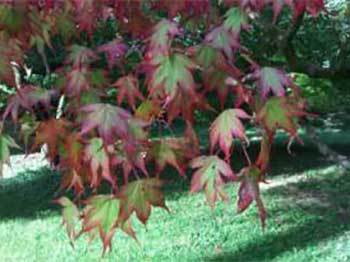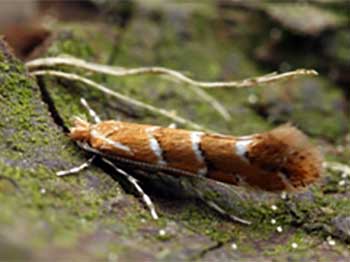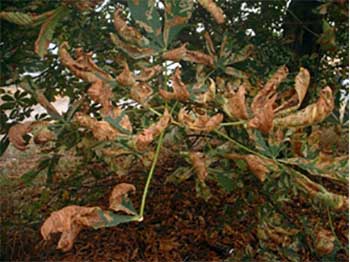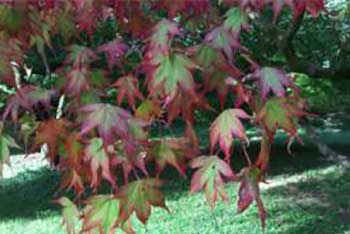Is autumn coming early?
Are autumn colours at Westonbirt appearing earlier than normal? That’s the question prompted by stories in last weekend’s media about the effects a drier spring has had on trees.
On a walk around Westonbirt for BBC Points West, Arboretum Director Simon Toomer and Tree Team Superintendent Mark Ballard explained that whilst there do appear to be a few tentative signs of the famous reds and oranges of autumn, the best is still to come. They explained to presenter Sabet Choudhury that there can be several reasons for these early autumn signs.

The first is of course the weather. A long dry period in spring led to dry soils, which caused stress in some trees. This can have a delayed effect with trees starting to change colour a few weeks earlier than normal (essentially they are winding down for the year a bit earlier as the chlorophyll in the leaves begins to break down). Some beautiful examples of this can be seen in Acer Glade at the moment, where a few of the Japanese maples (Acer palmatum) are showing a mixture of lush green on the underside of the tree and salmon red/ orange on the top of the canopy.
Another reason is tree pests and disease. One particular case people are becoming more aware of is the horse chestnut leaf miner moth (Cameraria ohridella).

The moth caterpillars burrow into the leaves, which become covered with brown patches. In severe cases, the effect can cause the whole canopy to appear as if it has taken an early autumnal turn. The insect arrived in the UK (London) in 2002 and reached Westonbirt Arboretum about four years ago.

There are a few examples around Westonbirt, but as this is a relatively new tree pest, scientists are still undecided as to how damaging it will be for trees’ long-term health.
The third reason for unusual leaf colour is that the leaves of some maples are in fact bred to produce colour all year round. These varieties can look particularly spectacular in spring and can be found across the Old Arboretum and into Silk Wood.
On the whole though, most trees are still in their full summer leaf-coats and will wait until shortening day lengths tell them that winter is on the way. Then the real botanical fireworks will begin. As the nights get colder and the first frosts appear, the autumn colour at Westonbirt will accelerate and explode onto the scene in full force.
You can follow the autumn seasonal trail from the start of September. This year’s trail uses Japanese haiku poetry on each stop that has been written by our Friends and visitors to celebrate our most famous season – just pick up your map from admissions on your visit.
Our Autumn Colour Watch blog begins on 1 October and we hope this will be another exciting tool for tracking the colour changes throughout the arboretum.
